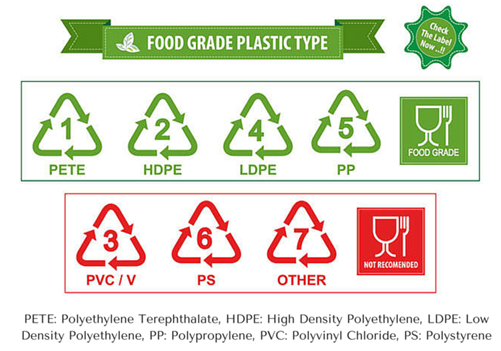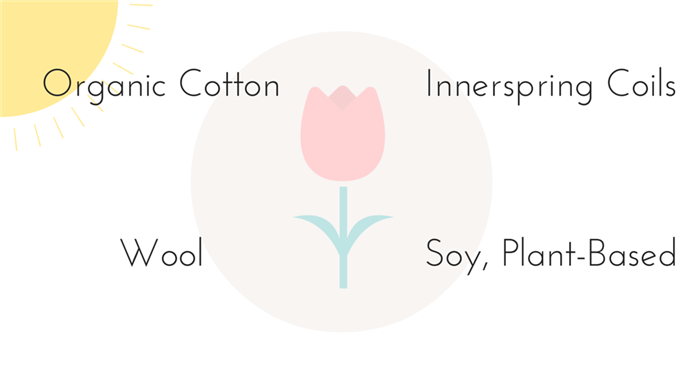For those of you in the market for a non-toxic baby mattress, you’ve probably heard a lot about VOCs and associated health risks for children. Lucky for you, you’ve taken a more invested approach to your baby’s health. As you may already know, a baby’s immune system is extremely vulnerable at such a young age and studies have increasingly shown correlations between toxic chemicals and health issues.
So what IS a toxic baby mattress anyway? It’s in the store, on the shelf… shouldn’t it be certified safe and ready to go? It depends on who you ask. Although companies must adhere to safety regulations such as the Consumer Product Safety Commission (CPSC) Fire Standard, companies are reluctant to share their actual process of passing these standards.
TOXIC vs. NON TOXIC BABY MATTRESS
The word toxic can have different meanings for different people. Specifically, while certain levels of chemicals are always present in our lives, many people share different ideas of what actually is toxic and how much should be of concern.
For example, Colgate says that all of their materials are non-toxic. Many of their foam mattresses, however, use polyurethane foam. What’s more, they’re also GREENGUARD Certified, which signifies that their mattress meets strict standards for low emissions and VOCs.

On the other hand, you have advocates that don’t want any flame retardants, phthalates or any other chemicals that may leach their potentially damaging chemical compounds around their baby.
Unfortunately, tracking the long-term health effects that a crib mattress has from infant to adult is near impossible. But there are definitely a few studies that may be eye-opening, and we’ll go further into that.
Here are some common toxic components you’ll find in a crib mattress…
- Flame Retardants: TOXIC
In 2007, the Consumer Product Safety Commission issued a new standard in which all mattresses must comply, also known as the CPSIA. In order for a mattress to be sold in the US marketplace, it must be able to pass a 30-second flame test to ensure a smaller sized fire with a slower growth rate. In turn, manufacturers were then tasked with adding flame retardant chemicals to ensure compliance. This of course, came at the detriment of many parents that did not want the additional chemicals.
PBDEs are compounds commonly used in meeting these requirements by reducing the flammability of common mattress materials like Polyurethane Foam.
What makes the problem worse, many top manufacturers are hush-hush about which chemicals they actually use in the process as it represents a trade secret for them. Not to mention, many are substituting one non-compliant chemical with another that may be untested. Of course, all this makes it frustrating for consumers that want to know what they’re buying.
Study: Five Times As Much Cancer-Causing Fire Retardant In Children Than Mothers
- Plasticizers: TOXIC
A plasticizer is a chemical that is added to a material (normally plastic) in order to form it into a specific, flexible shape. There are many different types that are being used, with some being more dangerous than others.
A recent study had been performed where 20 new and used mattresses were purchased to determine the presence of certain chemical additives. 17 of 20 mattresses contained at least one identifiable plasticizer with concentrations ranging from 1 – 35% by weight, with 60% of their covers containing plasticizer content greater than 9% by weight. Nine new mattresses (from different manufacturers) and eleven used mattresses (bought between 1993 and 2009) were tested in the study.
Noteworthy is that they mention the increased use of alternative phthalates since the CPSIA flammability standard went into effect.
- Polyvinyl Chloride (PVC): TOXIC
PVC (also known as vinyl) is typically added to a mattress for its ability to protect the inner foam, as well as to provide an easy-to-clean surface. Of course, PVC is now widely regarded as one of the most toxic indoor pollutants of all chemicals being used in the manufacture of baby products.

In fact, scientists are now reporting that as vinyl crib mattress covers are heated up (by the body heat of an infant or from sunlight, for example), they give off even more phthalates into the surrounding area.
Studies have already linked certain phthalates used to create vinyl with reproductive issues and increased risk for asthma and allergies.
NON TOXIC
So now that we know which are the most toxic components in a crib mattress and their potentially damaging effects on a baby’s immune system, what do you look for in a non-toxic crib mattress? Here are some of the obvious materials.

All of these are non-toxic and have their benefits, but you need to be careful. While some of these materials might be marketed as the “Eco-Friendly” choice, other components used to make a mattress (Page 10) may still contain vinyl coverings to make them waterproof, or use flame retardant chemicals like boric acid to pass federal standards.
These materials are merely marketable features and don’t tell you the whole story.
* Naturepedic makes mattresses that are Steel Coil inner, certified Organic Cotton material and use a Polyethylene (food grade plastic) waterproof covering and is able to pass the flammability standards without use of toxic chemicals. Expect to pay $250 – $300 for one. They also sell a $70, organic cotton crib mattress pad.
HOW TO FIND A NON TOXIC CRIB MATTRESS
Heather Stapleton, Ph.D. in environmental chemistry and authority figure on the environmental impact of flame retardants, suggests that she’s able to find flame retardant-free products by searching for products that don’t use polyurethane foam. Since companies may be prone to keeping their manufacturing process private, this stands out as great advice.
For the proactive shopper, here are some basic tips.
- Look for Organic materials
- Choose Innerspring Coils instead of foam
- Contact the company and ask about Flame Retardants and Phthalates
- Check for Certifications (GREENGUARD, or CertiPUR certified foam – if you go that route)
Finding everything you want in a non-toxic baby mattress is going to take some work since mattresses have many components and still need to meet certain regulations. Expect to pay up to a few hundred dollars.
The Thrifty Alternative to Costly, Non-Toxic Mattresses
Designing and manufacturing the safest mattress is also going to be expensive. Perhaps the easiest way to get around that is to buy a more economical mattress that is GREENGUARD and CertiPUR Certified and get a mattress cover that blocks off-gassing of chemical compounds.
BabeSafe and Serendipity are two popular “toxin-blocking mattress covers.”
BUYING A USED BABY MATTRESS
There are a few things you can do if you don’t have $300 to drop on a non-toxic baby mattress. Obviously one of them is to buy one of the mattress covers like BabeSafe or Serendipity. The other option is to buy a used mattress, assuming that the most off-gassing occurs when a product is new. But at the same time, Consumer Reports advises caution when doing this as you never know how it was used and stored and if there may be mold or bacteria present.
OTHER SAFETY INFORMATION
The CPSC has created an entire guideline for what constitutes an acceptable baby crib, as well as how that ties into mattress safety. It also details surface coating requirements, as well as lead and phthalate content limits.
Volatile Organic Compounds (VOCs)
VOCs are definitely a hot topic these days amongst parents. These gasses are emitted from tons of products in our homes, such as painted surfaces, air fresheners, cleaning supplies, indoor furnishings and much more. The worst part is that their concentrations are up to 10 times higher indoors than outdoors due to a lack of proper air circulation.
CONLUSION
Unfortunately, finding an entirely non-toxic baby mattress is going to be difficult. If non-toxic to you means zero chemicial additions, you’re going to have to do some research. Luckily, manufacturers are getting better all the time at finding out what consumers want and creating that for them. The good news is that it means you’ll be seeing a growing list of companies creating the types of products you want. It’s going to take some time, however, for consumer sentiment to push the demand.
